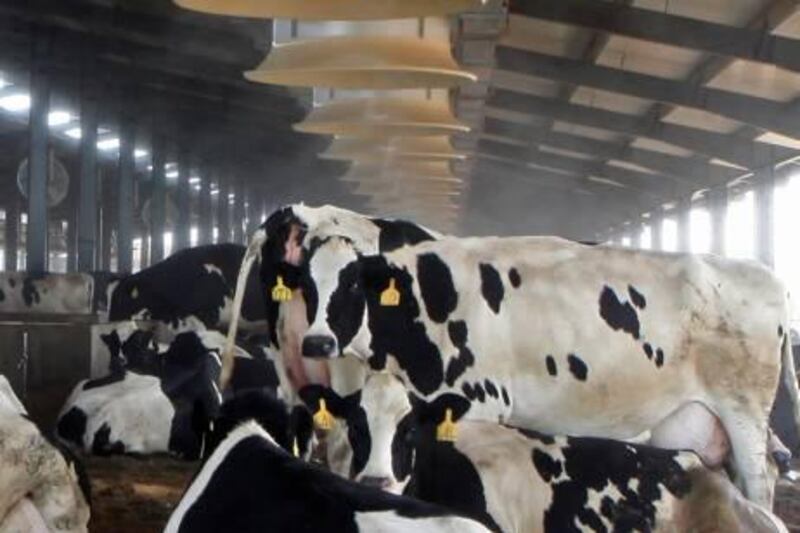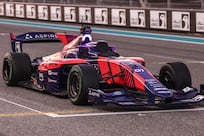DUBAI // The UAE's extremely hot summers can affect the quantity of milk produced on farms, experts have said.
If farm staff fail to keep their cows cool, the animals could suffer heat stress, halving their yield.
In humid conditions, heat stress can be a problem at temperatures as low as 20C, said Dr Frank Delfino, the owner of Delfino Nutrition and Management in Nashville, Tennessee. He was speaking at a forum in Dubai this month.
Overheated cows get dehydrated, and eat as little as 50 per cent the food they should. And that means much less milk.
"Their metabolic rate changes, they [lose more water] through evaporation, their hormones levels change and their body temperature rises," said Dr Delfino.
"There is also a significant milk drop, a [deterioration] of their body condition, metabolic and health problems, and they fail to reproduce."
When stressed, the animal breathes more quickly, providing an easy indicator of problems. The rate can double - to more than 85 breaths a minute - making livestock more prone to dehydration.
"As the animal does not sweat, it is trying to reduce its heat-load through moisture-loss through its lungs, like a dog panting," said Dr Delfino.
Dehydrated cows also milk poorly. "[Farms] need to include shade, sprays, fans, evaporative cooling systems, wind tunnels or cross ventilated barns," the doctor said.
On their own, covers to provide shade from the sun are not enough. And water must be sprayed in the correct way, or it can get trapped in the hair and act as an insulating layer, which leads to the animals getting even hotter.
Dr Delfino has been comparing various systems in use in Saudi Arabia and Arizona.
They include return lane soakers, where the animals are sprayed as they return from the milking parlour to the housing area, and a feedline soaker, which soaks them to their skin with large water droplets.
But one - known as the Korral Kool system - stood out. It consists of large fans with nozzles that inject a mist of water into the air above the animals.
With the right settings, it allows cows to produce almost eight more litres of milk a day.
Al Rawabi dairy farm in Dubai's Al Khawaneej area now uses the system for its 10,000 cattle.
Last October, two of its yards were emptied to allow the system to be installed in half the farm's 35 cattle houses.
"The system is controlled by the temperature," said Rami Hamad, the farm's manager.
The fans start running when the temperature hits 22C; at 24C, a first row of eight nozzles start spraying mist, and another of the eight rows every 2C above that.
The system, however, is far from cheap. Each fan covers just 12 cows and costs Dh35,000 to install; each of the farm's sheds has 32 of them.
That is too much for many smaller farms. "In general, large farms like Al Rawabi and Al Ain Dairy have the advanced systems," said Mr Hamad. "But the only way to cool cows in over-35C heat is with this system."
Without cooling, half the milk could be lost if the temperature rises over 40C. And above 50C, the animals are at risk of dying.
"Mist or fog will be counterproductive," Dr Delfino said. "We need to get the animal wet all the way through its skin."






